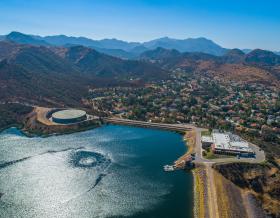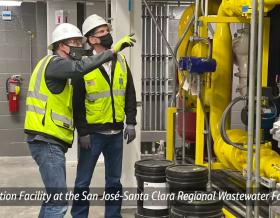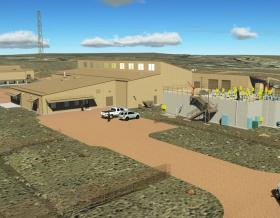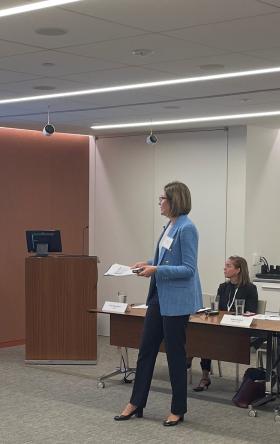Low Crosby Flood Risk Management Scheme
Delivering carbon-negative flood defense infrastructure
-
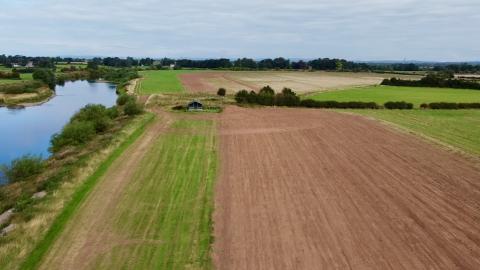
Lowering of the flood embankment, the bare earth representing the reprofiled embankment which was seeded to allow grass cover to re-establish itself
-
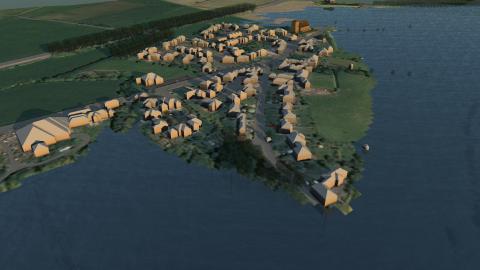
Visualization of how Low Crosby will remain dry for a flood event equivalent to Storm Desmond with the completed scheme in place
The Environment Agency wished to implement a cost-effective, sustainable flood risk reduction scheme for the Low Crosby community. To achieve this, they commissioned Jacobs to leverage our multi-disciplinary professional services, including hydraulic analysis, engineering feasibility assessment and design, environmental assessment and project management, along with our comprehensive knowledge of the local area and wider river catchment. The scheme adopted an entirely nature-based solution to substantially and sustainably reduce flood risk, with high resilience to climate change, while delivering long-term benefits to the health and wellbeing of the community.
Low Crosby is on the right bank of the River Eden, five kilometers northeast of Carlisle in Cumbria, U.K. The community has experienced repeated flooding, most notably following Storm Desmond in December 2015, when 60 properties were flooded. The Environment Agency aimed to reduce flood risk in a cost-effective, sustainable way. The scheme’s objectives aligned with the United Nations Sustainable Development Goals (U.N. SDGs) to:
- Deliver key flood risk management outcomes
- Protect and enhance the environment
- Promote health and wellbeing
- Implement a sustainable, low-carbon solution
“The sustainability challenges on this project were around delivering a low-carbon flood risk management solution while taking into account climate change, enhancing the natural environment and delivering social value. Jacobs designed an entirely nature-based solution which unlocked the option to “build less” and “deliver more,” avoiding construction works within the community and delivering long-term environmental and carbon benefits.”
-
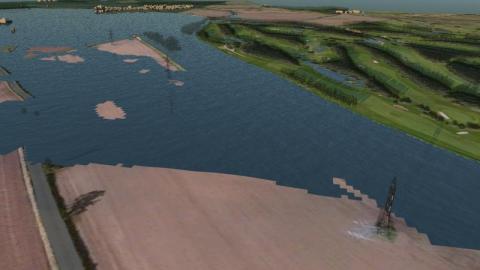
Hydraulic model outputs from Jacobs’ Flood Modeller
-
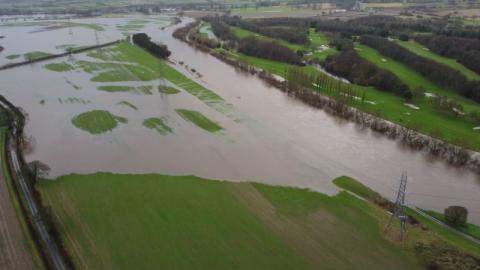
The first post-construction floodplain inundation event in January 2023
The solution involved reprofiling a three kilometer private embankment on the left bank of the river. This reconnected 185 hectares (457 acres) of floodplain, increasing local conveyance capacity and significantly reducing flood levels in Low Crosby village. The scheme was delivered at a design and construction cost of £2.6 million ($3.2 million).
Reconnecting the floodplain was only possible with the support of the landowner — whose agriculture business had benefitted from the private embankment — along with Natural England and the affected residents and businesses. By working closely with the landowner and Natural England, the team unlocked the option to build less and deliver more, reducing the need for disruptive construction works in the village, while delivering long-term environmental and carbon benefits. Community engagement was a key enabler of success, requiring careful management of conflicting stakeholder views to achieve consensus.
This was a fully digital project, using the latest innovations in this field, including:
- Piloting the Environment Agency’s library of smart, parametric 3D model components
- Using design model data to control the earth-moving plant
- Developing an automation tool to quickly extract digital asset data
The scheme also contributed to research and development data, with outputs from the economic model informing the client’s Carbon Impacts Tool, a method for assessing carbon emissions caused by flooding. The whole-life carbon assessment used Jacobs-developed analysis methods to estimate the impact of land use change on carbon emissions.
The project’s key benefits significantly contribute to the Environment Agency’s net-zero goals and align with multiple U.N. SDGs. These efforts are reflected in the project’s Excellent CEEQUAL rating.
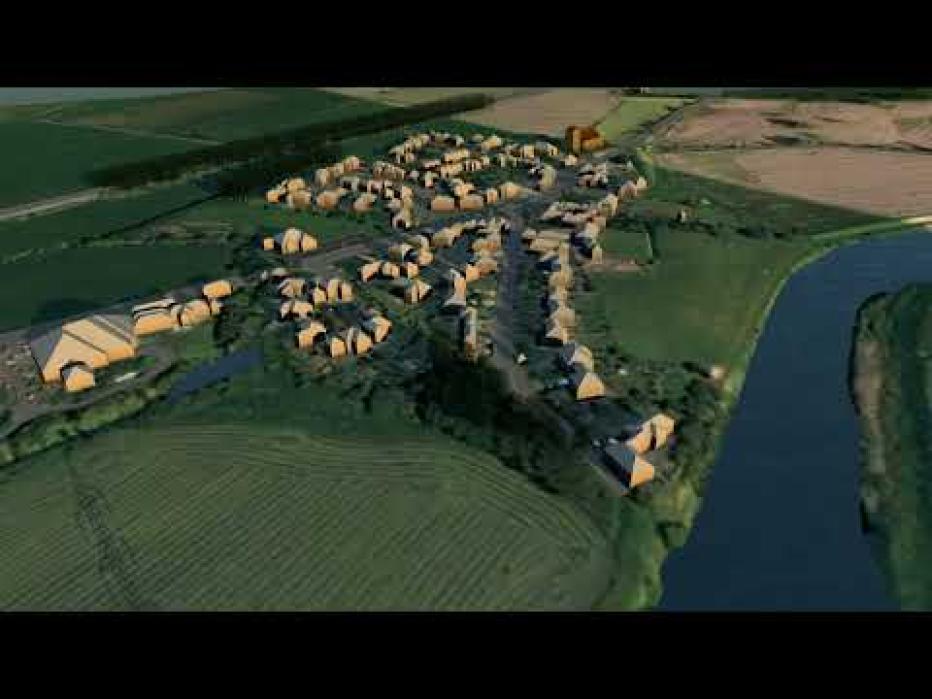
Video courtesy of Newground Flood
-
95
Homes with substantially reduced flood risk
-
£ 15.5
Million ($19 million) of quantified economic benefit, including £8 million ($9.8 million) of natural capital benefit
-
185
Hectares (457 acres) of floodplain reconnected
-
3
Kilometers of protected river habitat restored
-
30000
Tonnes (33,069 U.S. short tons) of carbon dioxide sequestered
-
0
Tonnes of steel or concrete used
Key team members
-

David Webborn, Design Manager
David acted as Design Manager for the project and led the development of the delivered solution from the initial feasibility stage through to detailed design and construction.
-

Adam Parkes, Technical Director of Flood Products
Adam is a lead hydrologist and hydraulic modeler and leads the development of Jacobs’ suite of flood modeling software products. Adam was Jacob’s hydrology and hydraulic modeling lead on the scheme.
-

Ian Knight, Project Verifier
Ian is Jacobs’ engineering design coordinator for Environment Agency’s project delivery program in Northwest England. He acted as Jacobs’ project verifier on this scheme, providing independent technical reviews and advice to the project team.
-

Liam Holmes, Civil Engineer
Liam joined the project team as a graduate civil engineer at the commencement of detailed design. He authored most of the technical deliverables that enabled the scheme to be constructed.
-

Ed McGurin, Project Manager (Appraisal)
Ed is a director of project management and acted as project manager for the scheme during the appraisal (feasibility) stages.
-

Catherine Baxter, Project Manager (Design)
Catherine is a principal project manager and was Jacobs’ project manager during the detailed design stage. She also acted as assistant project manager during the appraisal stage.
-

Gail Rainford, Ecologist
Gail is an ecologist and led the crucial ecological assessment work that helped identify the multiple ecological and carbon benefits associated with the scheme.
-

Steve Yates, Principal Designer
Steve is a safety in design specialist and was Jacobs’ principal designer advisor for this project, carrying out design safety reviews and providing advice on technical safety to the client and the project team.
-

Martin Johnson, Landscape Architecture Lead
Martin leads the Warrington landscape team and was responsible for the team’s work on the Low Crosby project from appraisal stage through to detailed landscape design.
-

Judith Cudden, Geomorphology Lead
Judith was the fluvial geomorphologist lead and undertook the Water Framework Directive assessment to secure compliance with legislative requirements and ensure the scheme provided environmental benefits.
Featured Articles
Flood Hub: Low Crosby Flood Risk Management Scheme | The Flood Hub
PAS 2080 Guidance Document: 2023-03-29-pas_2080_guidance_document_april_2023.pdf (ice.org.uk)
Constructing Excellence Sustainability Award: Awards Winners’ Database - Constructing Excellence
ICE North West Small Project of the Year Award: Innovation Shines Through At ICE North West Civil Engineering Awards | Institution of Civil Engineers (ICE)
APM Sustainability Award (Winner as part of Jacobs’ culture, and a finalist as an individual project): APM Sustainability Award | APM Awards 2023
APM Innovation in Project Management Award: Innovation in Project Management Award | APM Awards 2023

